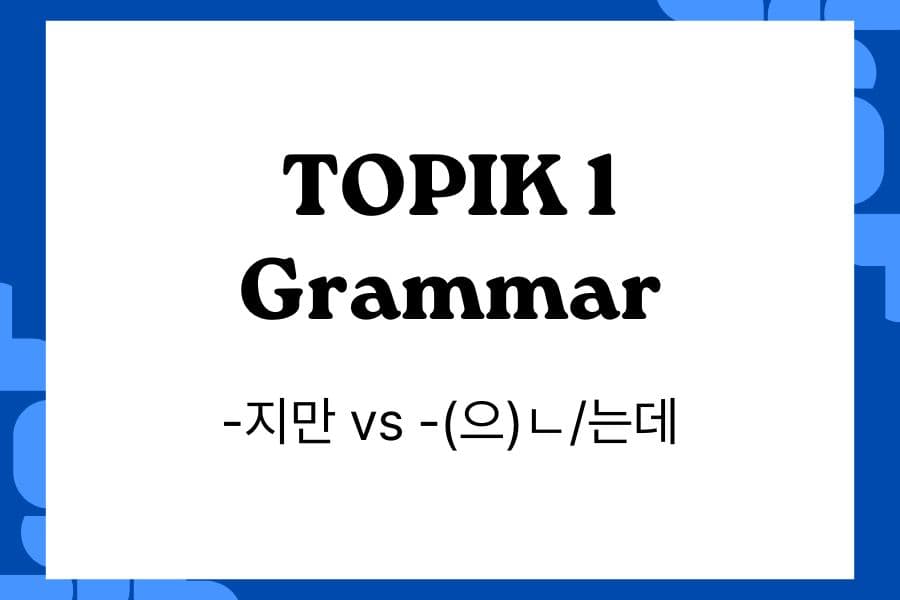
Both -지만 vs -(으)ㄴ/는데 are used to show contrast in Korean, but they’re not the same.
-지만 expresses a clear opposition like “but,” while -(으)ㄴ/는데 can show contrast, background, or an unexpected situation.
Knowing this nuance will help you write and speak naturally — and avoid losing points in TOPIK grammar questions.
Grammar Focus – -지만 vs -(으)ㄴ/는데
-지만
The ending -지만 is used to contrast two clauses that have opposite meanings or expectations.
It’s similar to “but” or “although.”
- Function: Expresses direct opposition between two facts or opinions.
- Form: Attach directly to verbs/adjectives or “이다/아니다.”
- Context: Very common in both spoken and written Korean.
예문:
- 저는 학생이지만 선생님처럼 열심히 공부해요.
- 날씨가 춥지만 밖에 나가야 해요.
- 한국어는 어렵지만 재미있어요.
👉 Key Point: Use -지만 when the second clause directly contrasts the first.
-(으)ㄴ/는데
The ending -(으)ㄴ/는데 has several meanings, but at the TOPIK 1 level, it mainly shows background or mild contrast.
It’s softer and more natural in conversation than -지만.
- Function 1 (Contrast): “but,” “however,” showing mild difference.
- Function 2 (Background): Provides context for the next action or situation.
- Form:
- Verb stems → -는데
- Adjective stems → -은데 / -ㄴ데
- Nouns → 인데
예문:
- 저는 학생인데 제 동생은 회사원이에요.
- 날씨가 추운데 밖에서 놀아요.
- 지금 바쁜데 무슨 일 있어요?
👉 Key Point: -(으)ㄴ/는데 gives background or connects sentences naturally, not just contrast.
How They Appear in TOPIK 1
In the exam, look at how strong the contrast is.
If the two clauses oppose directly, use -지만; if the second clause adds background or context, use -(으)ㄴ/는데.
Example Question 1
저는 학생( ) 지금 돈을 벌고 있어요.
① 이지만
② 인데
③ 으니까
④ 게 되다
✅ Correct answer: ② 인데 (Background connection: I’m a student, and (by the way) I also work.)
Example Question 2
한국어는 어렵( ) 재미있어요.
① 지만
② 은데
③ 으니까
④ 게 되다
✅ Correct answer: ① 지만 (Clear contrast: difficult but fun.)
Example Question 3
날씨가 추( ) 밖에서 운동했어요.
① 지만
② 은데
③ 으니까
④ 게 되다
✅ Correct answer: ① 지만 (Opposition: It was cold, but I exercised outside.)
Study Tip for TOPIK Learners
- Strong contrast or opinion → -지만
- Background, description, or natural connection → -(으)ㄴ/는데
- Try rewriting the same sentence both ways:
- 날씨가 추지만 밖에 나가요. (It’s cold, but I go out.)
- 날씨가 추운데 나가야 해요. (It’s cold, and (since it is) I have to go out.)
- Practice listening for intonation — -(으)ㄴ/는데 often sounds softer or more conversational.
Both -지만 and -(으)ㄴ/는데 show contrast, but their nuance is different.
Use -지만 for direct opposition, and -(으)ㄴ/는데 for background or mild contrast.
Understanding this difference is key to writing and speaking naturally — and scoring higher in TOPIK 1.
👉 Next in this series: “-고 있다 vs -아/어 있다” — expressing action vs state.
Keep studying with our TOPIK 1 book

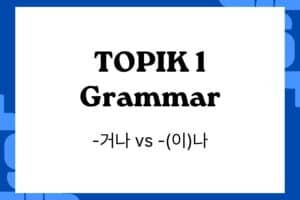
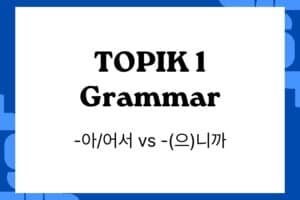
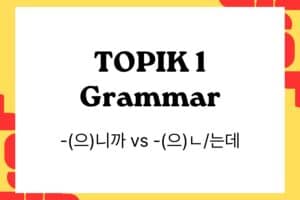
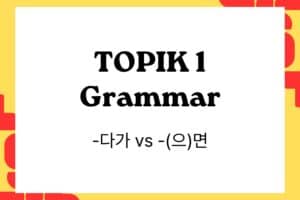

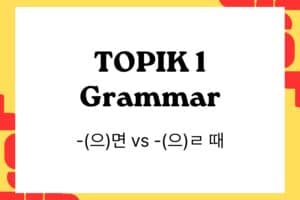

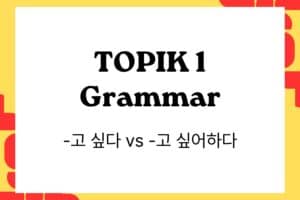


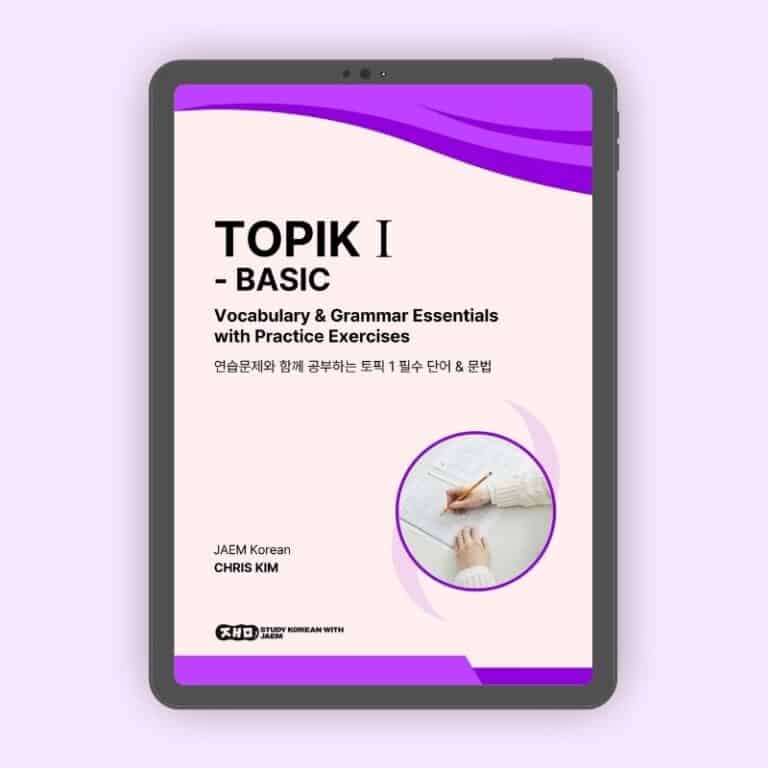
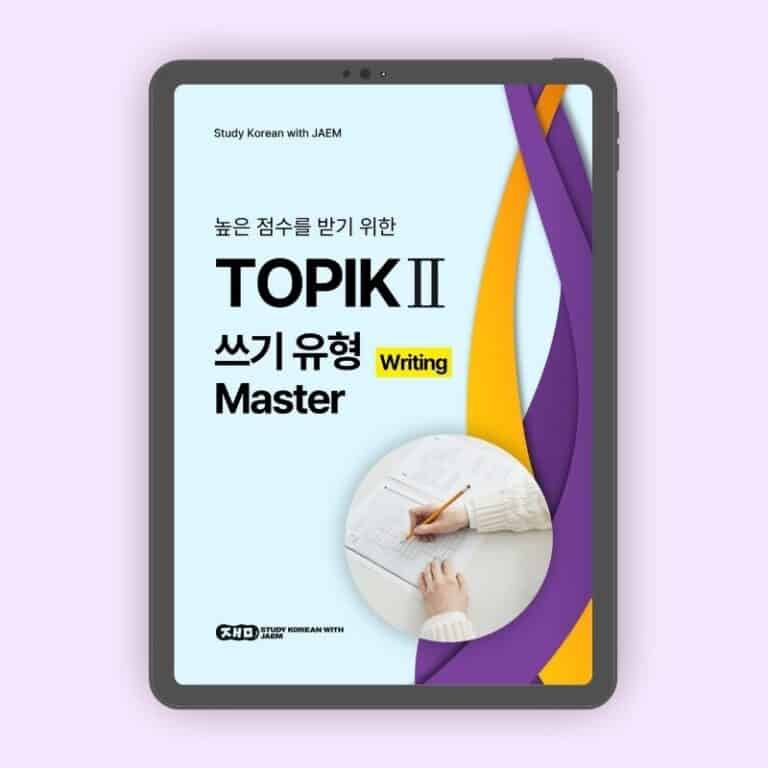
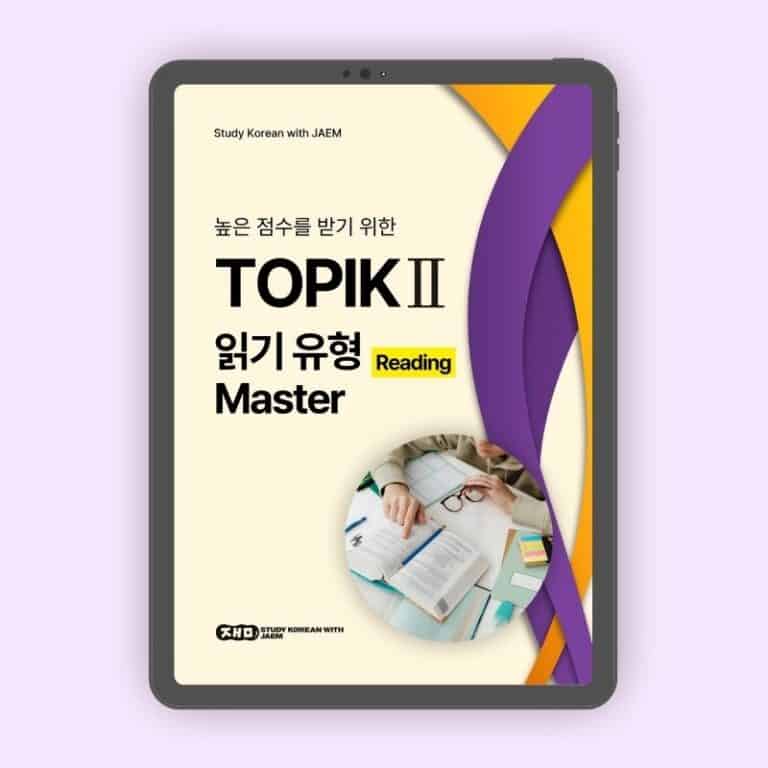


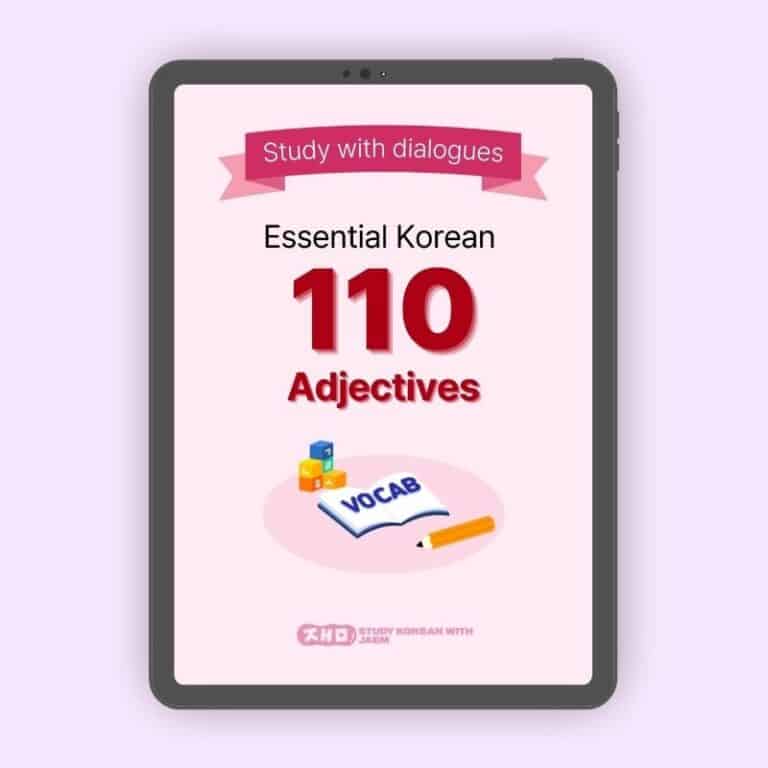

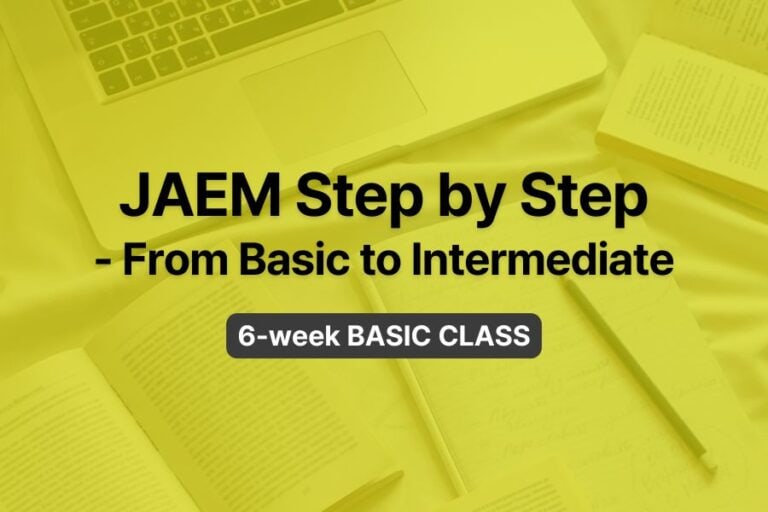

Responses